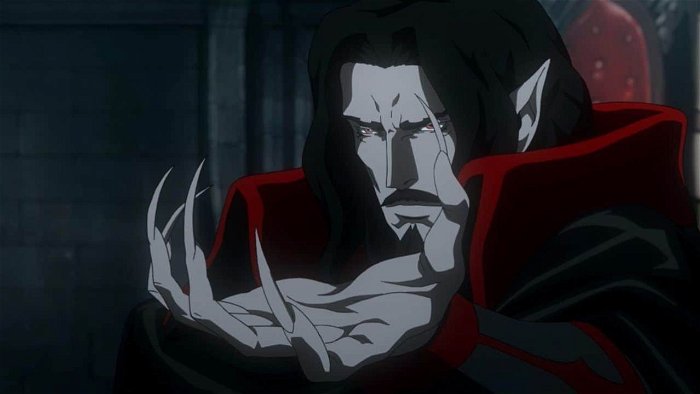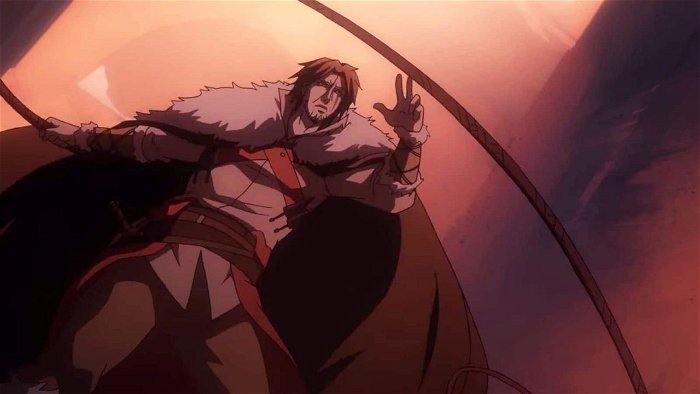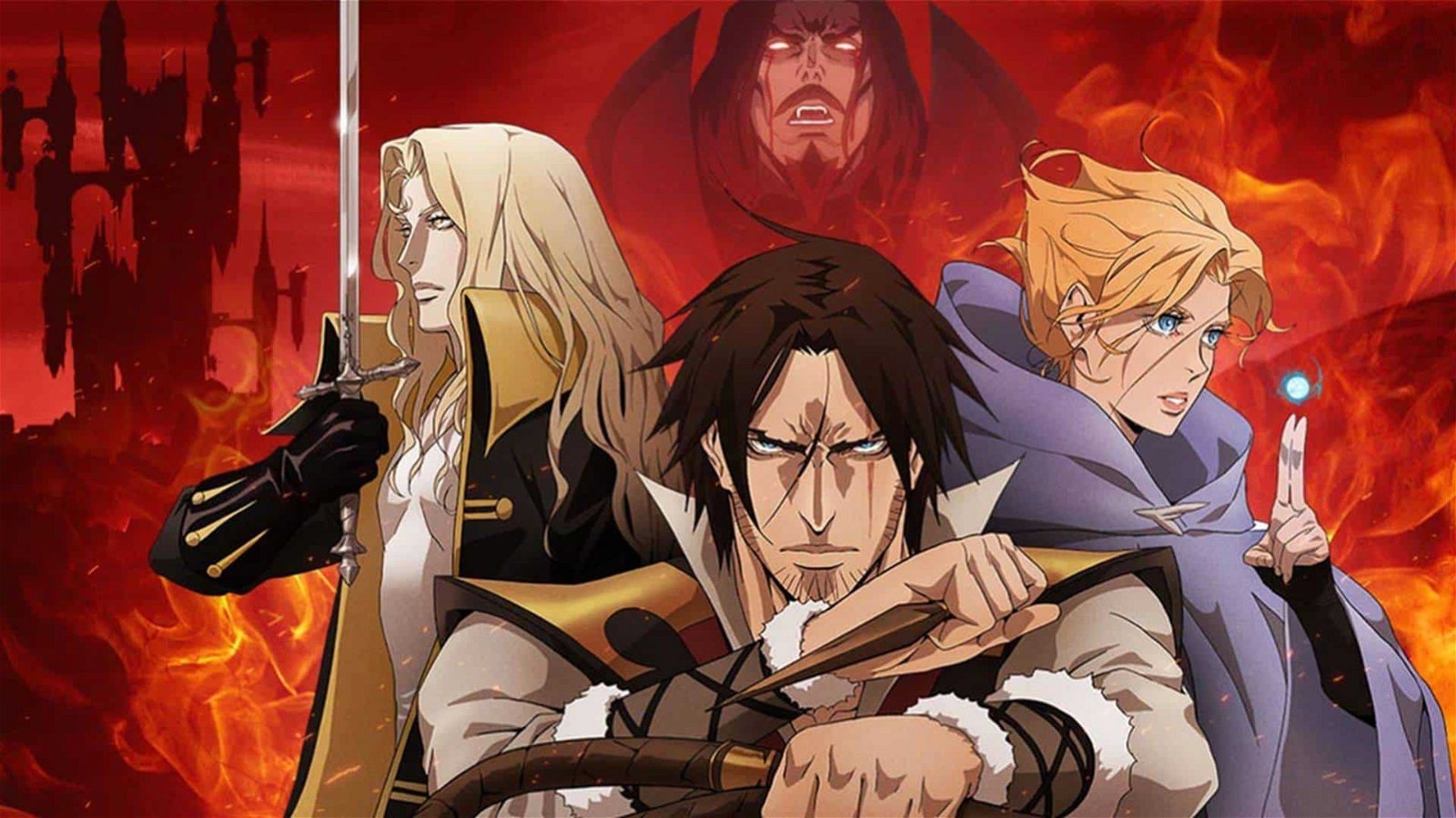Adi Shankar managed to do the impossible with Castlevania: craft a show based on a video game and have it become critically successful. How did he pull it off?
Gaming is bigger than ever, with more people jumping on their phone or picking up a controller than ever before. Yet, even with this attention, there are few media properties that can transcend the game screen and make their way to other forms of media. A few have managed it, but very few have crafted quality titles out of these properties. With the release of Castlevania Season 2, Adi Shankar has shown that yes, it can be done .
Teleporting viewers into a world of demons, vampires, and magic, Castlevania took the core of what made the games so enjoyable and built a fully realized world around those ideas. The show proves that even if you were not a fan of the games previously you can still jump into it and enjoy the ride. However, taking a property and translating the concepts from game to screen is no easy task. It takes passion, perseverance, and a love of the source material. Time and time again it has been shown what can happen to gaming adaptations if placed in the wrong hands with no clear idea why or how they can make the show/movie a reality.
It may sound cliché, but it often takes the right series of events to set the ball into motion, especially where money and Hollywood are concerned. As Shankar was being approached by film studios looking to remake and reboot their blockbuster franchises, he was also taking calls from streaming services, attempting to find a level of sympatico that not only allowed him the freedom to do what he wanted but also celebrated it, allowing him to bring his love of the gaming medium to his work on these new platforms.
“I felt like I could work with the streaming places…because they’re basically catering to niche and very specific audiences. I felt like that was the first time my love of gaming and the fact that I’m more of a gamer, more a part of gaming culture than I am part of film culture, was all of a sudden valued [more than] before. I’d been approached to do Castlevania in 2012. Different company, different people, different everything. That would’ve been a live action film, but the whole project felt like one of your typical screen gem type movies in the mould of Resident Evil where it had the name Castlevania but would have shared very little with the actual gaming franchise it shared its name with,” Shankar says.
There are countless examples of how to not tackle the move from interactive media to film, including movies like Resident Evil to Alone in the Dark. But somehow Castlevania is different, even though its two seasons paint a brutal world filled with lore of which you, the viewer, are only scratching the surface.

“The story is built on preconceived ideas, but again this is part of the beauty of it and why it really didn’t need ‘fixing’; the lore is so rich and so deep. On top of that, it works off existing tropes that are in the public domain and are part of the global consciousness. So we don’t need to go in there and explain where the vampire stands or what the core concepts are about the universe,” Shankar explains.
It is so easy to simply retell a game’s story. While yes, it makes the writing and setup easy, it leaves little in the realm in terms of creative freedom. Taking the universe of Castlevania and telling the games’ stories on a parallel timeline gives the writers leeway to push boundaries while staying true to the core concepts. Moving beyond what most of Hollywood does when it tackles movies, Shankar gave himself a new timeline to work from, one that would allow for some events to unfold as expected while still giving the option to exceed expectations and surprise the viewer.
In response to a question about whether or not the story of Castlevania from the games was a jumping off point for the series, Shankar says, “I would say more than just a jumping off point. I would say it’s literally a parallel universe to the games, in the same way that you know the MCU takes place in a parallel universe to the comics. So it’s not even a jumping off point as much as it is literally a parallel timeline.”

Beyond the core concept of the series, the visuals helped capture the hearts and minds of viewers young and old. The visceral look and style of the series pushed it above the countless fantasy CGI shows currently available to watch. It harkened back to the anime series that littered the airwaves of late-night Cartoon Network or SyFy by bringing the cover art of the games to life in a way you never thought possible in all their brutal, fantastical glory. Without this look and feel, Castlevania would not have near the impact or staying power, and this goes for the games and the show. A mix of anime style and western animation helped craft an experience that was as engrossing as it was a visual spectacle.
“I grew up immersed in Japanese culture, watching anime on TV due to the region I happened to live in while growing up. That 2D hand-drawn vibe which is where you’re getting that visceral feel. Where it’s not just that you feel every punch, but that the hand-drawn vibe is able to communicate emotion way better than the CGI equivalent,” Shankar says.
“I grew up immersed in Japanese culture, watching anime on TV due to the region I happened to live in while growing up.”
“I like CGI and it works really well when you want to communicates sadness or cuteness. Pixar movies kill it; watching the first five minutes of Up you will be like, ‘This is the best thing I have ever seen,’ but certain genres benefit from that old school, hand-drawn feel. The things that were on TV like Vampire Hunter D, Ninja Scroll, Captain Harlock…those were literally the reference points going in.”
With the look and feel in place, finding the right era with the right selection of characters from the Castlevania cannon was the next key step. There were a slew of choices available to pull from, all with advantages, and there are also some iconic roles that need to make appearances. The problem with Castlevania is the fact that the games take place over vast stretches of time. While there are plenty of characters to choose from, few interact from game to game, and this is a big challenge for anyone looking to take on the story for a television adaptation.

“It wasn’t so much picking characters, but picking a time period. Castlevania has a lot of characters but [they’re] across different timelines. So again with Marvel analogy, you’re saying, ‘Do we want to set the show in Marvel 2099 or do we want to set the show in an Age of Apocalypse,’ Shankar explains.
“It is almost like you are picking the timelines. We just started very early in the timeline and after that, it becomes a process of elimination, but obviously, you have Dracula and the party of Alucard, Cypher, and Trevor who come from Castlevania 3: Dracula ‘s Curse. But then when you look at the new additions to the cast in Season 2—the hacker and Isaac—they are along the same line. Hector is the protagonist of a game that chronologically takes place after Castlevania 3, [which was] obviously was made years later, but this dude is the star of his own game.”
Shankar continues, “And with Hector specifically I loved the idea. For me personally, I’m not speaking for everyone on the show, but for me personally I love the idea of any show or any universe where you have characters that are kind of outside of the core mechanics.”
From slaying monsters to taking down the forces of Hell, there are many more stories to tell in the Castlevania universe. Season 2 merely helped shape and expand the possibilities of the series, and there are many new characters and places now up for grabs. One thing is for sure, wherever Adi Shankar decides to take the show—on his alternative timeline—it will be a visual and narrative spectacle to watch when it hits Netflix.

With Season 2 now streaming, and Season 3 currently in production, Castlevania has many more stories to tell, even if there are no new games to currently play. The work Adi Shankar has managed with the show not only paves the way for future game-related projects but also gives a clear outline of how it can be done. Ultimately, Castlevania on Netflix is a testament to what passion and a love of the source material can achieve when crafting an adaptation of a video game. You can currently watch Castlevania on Netflix, and while the third season is currently in production, no firm release date has been listed.





